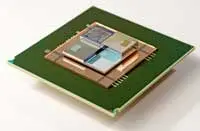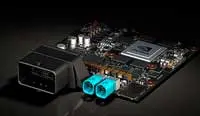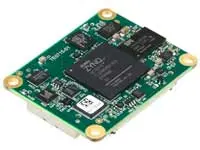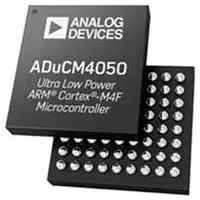Electronics News
Archive : 19 March 2017 год
A sensor developed at the University of British Columbia (UBC) could help make advanced transparent and stretchable devices a reality.
The sensor uses a highly conductive gel sandwiched between layers of silicone. This allows different types of touch to be detected, including swiping and tapping, even when it is stretched, folded or bent.
"There are sensors that can detect pressure or a hovering finger. There are also sensors that are foldable, transparent and stretchable. Our contribution is a device that combines all those functions in one compact package," said UBC PhD student Mirza Saquib Sarwar.
According to the researchers, the prototype measures 5 x 5cm but could be easily scaled up as it uses inexpensive, widely available materials.
"It's entirely possible to make a room-sized version of this sensor for just dollars per square metre, and then put sensors on the wall, on the floor, or over the surface of the body," said Sarwar. "And because it's cheap to manufacture, it could be embedded in disposable wearables like health monitors."
The sensor could also be integrated in robotic ‘skins’ to make human-robot interactions safer. "Currently, machines are kept separate from humans in the workplace because of the possibility that they could injure humans,” added professor John Madden. “If a robot could detect our presence and be 'soft' enough that they don't damage us during an interaction, we could safely exchange tools with them, they could pick up objects without damaging them and safely probe their environment.”
Author
Peggy Lee
Source: www.newelectronics.co.uk
 Chip stacks could be supplied with electrical power by integrated flow batteries and cooled at the same time, according to research undertaken by ETH Zurich and IBM Research Zurich.
Chip stacks could be supplied with electrical power by integrated flow batteries and cooled at the same time, according to research undertaken by ETH Zurich and IBM Research Zurich.
In flow batteries, electricity is produced by an electrochemical reaction between two liquid electrolytes which are pumped into the battery cell through a closed loop. By using liquids that are suitable for use as flow-battery electrolytes and for cooling, heat can be dissipated using the same circuit.
“The chips are effectively operated with a liquid fuel and produce their own electricity,” said ETH Professor Dimos Poulikakos.
The concept is to assemble chip stacks layer by layer – a computer chip, then a thin battery to supply the chip with electricity and cool it, then another chip and so on.
As part of this work, the team has built a 1.5mm thick battery that generates 1.4W/cm2. After subtracting the power required to pump the liquid electrolytes to the battery, the net power density is 1W/cm2.
The team showed in an experiment that electrolyte liquids can not only cool a chip, but also dissipate many times more heat than the battery generates as electrical energy.
The electrochemical reactions in the battery occur in two thin, porous electrode layers separated by a membrane. 3D printing technology was used to build a polymer channel system to press the electrolyte liquid into the porous electrode layer as efficiently as possible. The most suitable of the designs tested proved to be wedge shaped convergent channels.
However, although the battery’s power density is high, the amount of electricity produced is not enough to power a chip and the team are looking to industrial partners to optimise the design.
Author
Graham Pitcher
Source: www.newelectronics.co.uk
 Bosch and NVIDIA are collaborating to develop artificial intelligence self-driving systems targeted at mass market cars. The system, which will be built on NVIDIA’s deep learning software and hardware, is intended to enable vehicles to be trained on the complexities of driving, operated autonomously and updated over the air with new features and capabilities.
Bosch and NVIDIA are collaborating to develop artificial intelligence self-driving systems targeted at mass market cars. The system, which will be built on NVIDIA’s deep learning software and hardware, is intended to enable vehicles to be trained on the complexities of driving, operated autonomously and updated over the air with new features and capabilities.
Bosch’s CEO Dr Volkmar Denner said: “Automated driving makes roads safer and artificial intelligence is the key to making that happen. We are making the car smart.”
The Bosch AI car computer system will be based on next-generation NVIDIA DRIVE PX technology, including Xavier, a single-chip processor designed to enable level 4 autonomous driving. Said to have an ‘unprecedented level of performance’, Xavier will handle self driving computation tasks, including running deep neural nets to sense surroundings, understanding the 3D environment, localising the car on an HD map, predicting the behaviour and position of other objects, computing a safe path and car dynamics
“Self-driving cars are a challenge that can finally be solved with recent breakthroughs in deep learning and artificial intelligence,” said Jen-Hsun Huang, NVIDIA’s CEO. “Using the DRIVE PX AI car computer, Bosch will build automotive grade systems for the mass production of autonomous cars. Together, we will realise a future where autonomous vehicles make mobility safe and accessible to all.”
Author
Graham Pitcher
Source: www.newelectronics.co.uk
 Lynx Software Technologies has demonstrated its LynxSecure Separation Kernel hypervisor on the Xilinx Zynq Ultrascale+ MPSoC at Embedded World. It is the first view of LynxSecure on an ARM Cortex A-53 processor and is, according to the company, a significant milestone for designers of ARM-based automotive, avionics, industrial and medical devices.
Lynx Software Technologies has demonstrated its LynxSecure Separation Kernel hypervisor on the Xilinx Zynq Ultrascale+ MPSoC at Embedded World. It is the first view of LynxSecure on an ARM Cortex A-53 processor and is, according to the company, a significant milestone for designers of ARM-based automotive, avionics, industrial and medical devices.
Commenting Robert Day, vice president of marketing at Lynx, said, “ARM designers are now able to run safety critical environments alongside a general purpose OS like Linuxor LynxOS RTOS on the same Xilinx processor without compromising safety, security or real-time performance.”
Use cases include automotive systems based on environments such as AUTOSAR RTA-BSW from ETAS and avionics designs using LynxOS-178 RTOS from Lynx.
“Designers,” according to Day, “can now match the security of air-gap hardware partitioning without incurring the cost, power and size overhead of separate hardware.”
The LynxSecure port to the UltraScale+ MPSoC supports modular software architectures and tight integration with FPGAs for hosting a combination of micro services (bare-metal), trusted functions, and open source projects on a single SoC.
The demonstration AT Embedded World is intended to illustrate how the platform is able to allow true heterogeneous computing on a single processor and how LynxSecure can enable bare-metal applications for performance and security.As part of a true heterogeneous computing platform, developers have the option to decide which functions reside in software using LynxSecure bare-metal apps or hardware through Xilinx FPGA fabric.
Author
Neil Tyler
Source: www.newelectronics.co.uk
 Analog Devices has unveiled an ultra low power microcontroller unit (MCU) that looks to address the growing need for embedding advanced algorithms while consuming the lowest system power at Internet of Things (IoT) edge nodes.
Analog Devices has unveiled an ultra low power microcontroller unit (MCU) that looks to address the growing need for embedding advanced algorithms while consuming the lowest system power at Internet of Things (IoT) edge nodes.
The ADuCM4050 MCU includes an ARM Cortex-M4 core with floating-point unit, expanded SRAM, and embedded flash memory in order to allow localised decision making and ensuring that only the most important data is sent to the cloud.
The MCU uses SensorStrobe technology which allows it to remain in a low power state while sensors and RF technology are still collecting data. As a result the MCU is able to deliver over 10 times system-level power savings resulting in extended battery life or longer time between battery charges.
Security has also been enhanced. Encryption provides stronger IP protection for the designer and better protection against malware and misuse. Among these are AES 128/256, SHA 256, block ciphers for code protection, key wrap, and HMAC.
The ADuCM4050 MCU is to target applications where long battery life is critical, but where security, performance integrity, and the ability to pre-process and filter sensor data to eliminate artifacts and noise are also requirements. Applications include clinical vital-signs monitoring, smart energy management, and asset health/factory equipment reporting.
The ADuCM4050 is able to support multiple digital- and analogue-sensor inputs via its SensorStrobe technology so they can be combined to analyse their data for smarter, more sophisticated functionality and there is no need to wake up the microcontroller frequently to report routine or partial data, saving significant power over the long term.
The extremely low power requirements of the ADuCM4050 are seen in its 40μA/MHz active-mode consumption, which drops to 680nA in hibernate mode. The large amount of SRAM and flash memory – 128kB and 512kB, respectively – and the ability to retain almost all of the SRAM, enables it to get data ready quicker when it wakes up from hibernate (sleep) mode, another major power-saving feature.
Author
Neil Tyler
Source: www.newelectronics.co.uk
